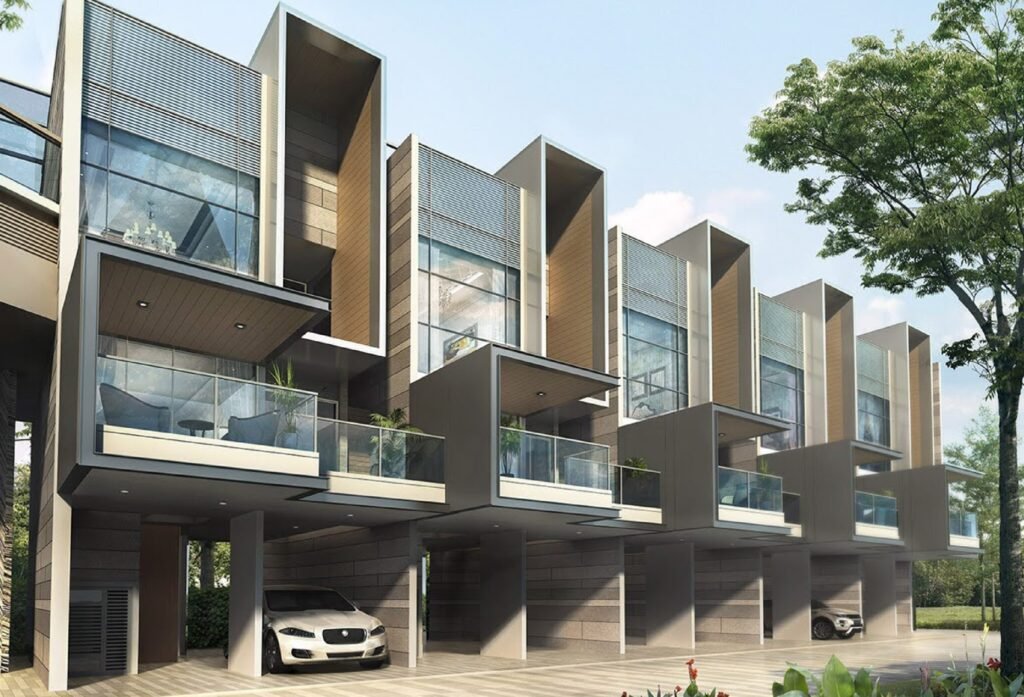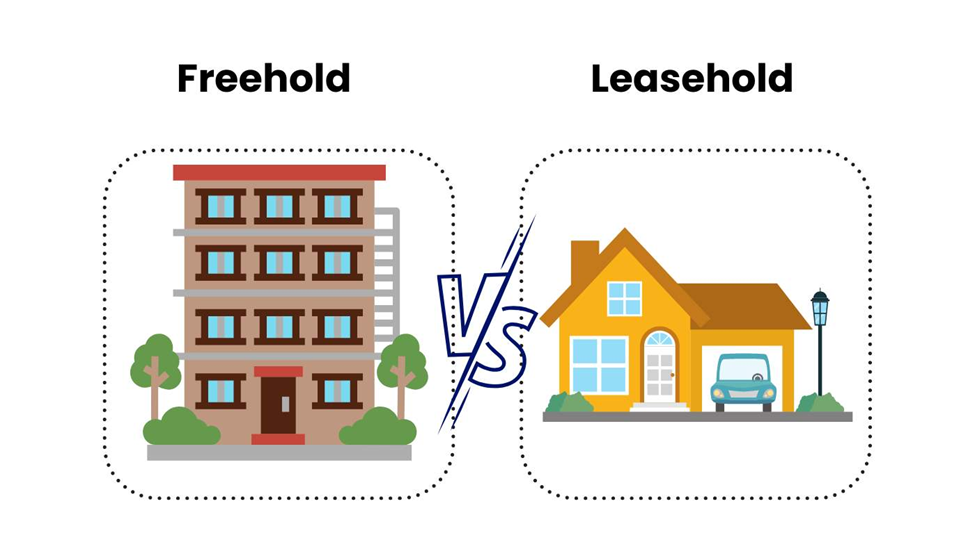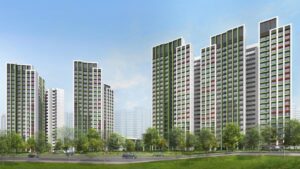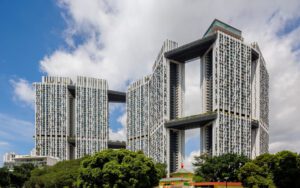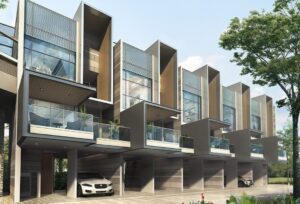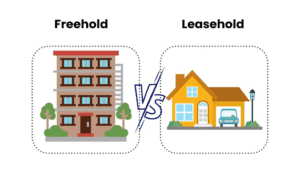Thanks to the proliferation of property blogs, streams, and even paid seminars, you can easily find property-related data these days. But while it’s easy to look up details like past transactions, or various investing strategies, the presentation is selective: people with an agenda may leave out the less pleasant facts, or oversimplify things. Here are some elements that are often overlooked:
1. Square footage is not an accurate indicator of spaciousness
Have you ever stepped into a three-bedder, and felt it was more like a two-bedder? Or vice-versa?
Or perhaps you’ve viewed an older condo unit, where the square footage is unusually high (e.g. a two-bedder in Pandan Valley, built in the 1970s, can be over 1,170 sq. ft.). But you somehow feel that the unit still lacks space, or is cramped in certain areas.

The reason is that higher square footage doesn’t always mean you’ll have more room. Some units have extra-large balconies, bay windows, or air-con ledges. These features add to the overall square footage, but are not “liveable spaces”.
There’s also strata void space, or the space between the ground and the ceiling. When a unit has a very high ceiling – often indicated by the term loft apartment – this vertical space can count toward the total square footage.
In some cases, units with a lower square footage, but more efficient layouts, might have more living space.
For example, a 1,000 sq. ft. unit, which has 250 sq. ft. taken up by a balcony, air-con ledges, and bay windows, is less spacious than an 800 sq. ft. unit, that doesn’t have any of those features.
2. “Efficient layouts” may not mean comfortable layouts
Newer condos tend to emphasise their efficiency. TMW Maxwell, for example, specifically highlights furniture that folds into the walls, or flexible room layouts, as the key selling point.
A recent trend over the past decade has been the “dumbbell layout.” One example would be Terra Hill Residences:

Notice that, rather than having a traditional hallway to connect the rooms, the living room itself is the nexus which connects the other rooms.
This is more efficient, as a hallway space is considered wasteful (it serves no purpose other than for you to walk through it).
However, the desirability of this is subjective. Not everyone enjoys this kind of layout: some home owners prefer if the front door doesn’t open directly into the living room, and some may prefer that all the bedrooms are tucked away from the living room via a hallway.


Also, some features that are called spacious today – such as kitchens that don’t have a kitchen island, or that don’t reserve space for a service yard – may be undesirable to home makers.
Another point of argument is the inclusion of balconies. Home owners who prize efficiency will usually avoid balconies, as they feel it’s wasted space. But there are home owners who love big balconies, where they unwind or even fit a whole table to eat meals on the balcony.
While efficient layouts are usually marketed as a positive, remember they’re still subjective. The most efficient use of space may not be the most comfortable for you.
3. Just because your condo is leasehold, it doesn’t mean the land is also leasehold
Spring Grove was a good example of this: it’s a leasehold condo, sitting on freehold land owned by the US government. When an en-bloc sale was attempted, problems arose because a third party – the US government – got involved.
These situations can happen when the landowner leases out a freehold plot for 99-years, for a developer to build on. These properties carry a hidden risk: you don’t know the intentions of the landowner, once the lease is expired.
If, for example, the landowner is itself a property developer, then chances are they want the land plot for their own projects. They probably won’t agree to let it go in a collective sale.
If the plot belongs to the government, there may be future intentions such as using the plot for infrastructure projects, army camps, green zones, etc.
For this reason, I would suggest that you check if the 99-year leasehold is just that, or if the condo is a leasehold property carved out of someone else’s freehold land. The latter is disadvantageous, as it impacts redevelopment prospects.
For your easy reference, here are some examples (the list is not exhaustive).
– Scotts Tower
– Cabana
– The Shore Residences
– Cairnhill Nine
– Greenwood Mews
– East Bay Gardens
– Rochelle
– Alias Villas
– Parksuites
– Jervois Jade
4. Don’t forget to check when the last en-bloc attempt happened
After a failed en-bloc attempt, a second attempt can be made in as little as two years afterward. This poses a risk to new buyers, as it means an en-bloc could happen as early as their second year of ownership.
Don’t assume this is a windfall. You’re still liable to pay Sellers Stamp Duty (SSD) if you sell the property within the first three years of buying it, regardless of whether it’s due to an en-bloc. The SSD rate is 12% of sale proceeds if you sell on the first year, 8% on the second year, and 4% on the third year.
You can try to argue you’ll suffer a financial loss, and push for a higher portion of proceeds; or you can object and go to the Strata Titles Board (STB). But regardless of the outcome, it can be a major time-waster and headache to try and halt an en-bloc.
If you’ve spent significant sums on renovation, as well as having to pay SSD, you may find you barely break even by the time the en-bloc sale proceeds arrive. There’s also the added headache of finding financing for a new home (again!), and moving again so soon after getting settled in.

The most affected are parents who bought a home to be near their children’s school, only to see it go en-bloc before their child’s primary or secondary schooling is over.
I would always try to Google “Condo name + en-bloc” as part of the wider search, or look out for en-bloc notices on the condo message boards. I’d be especially wary if the last en-bloc attempt came very close to succeeding.
5. Different addresses in the same condo can be within, or outside, the 1km Home School Distance
As most parents are aware, children living within 1km of a school have greater priority during enrolment. Whether your home falls within this distance can be checked on One Map.
When advertising a project, it’s common to think of the whole project is a single address; but remember that’s not true. There are multiple addresses in a project: some are partially within the 1km range of a school, whilst others may not be.
For example, postal code 448870 doesn’t have any schools within 1km, but postal code 448872 has Ngee Ann Primary School within 1km. Both postal codes are within the same project (Seaside Residences).
I’m not an expert on education and school enrolment, so I don’t know if there are any special appeals or exceptions for these cases. But it’s probably best to ensure you pick an address within the 1km range just to be sure – and this may impact your choice of a specific unit.
For more help on house hunting, do reach out to me, and I can help you scrutinise your shortlisted homes for important details. You can also reach out to me if you’re still making the shortlist, and I can help you look for viable options in the neighbourhood.




